

William Stopford
The cars axed in 2025 that we'll miss the most
15 Hours Ago
It's an EV, but it's a Porsche first and foremost. It's perhaps the most accomplished EV money can buy right now , even in entry-level guise.
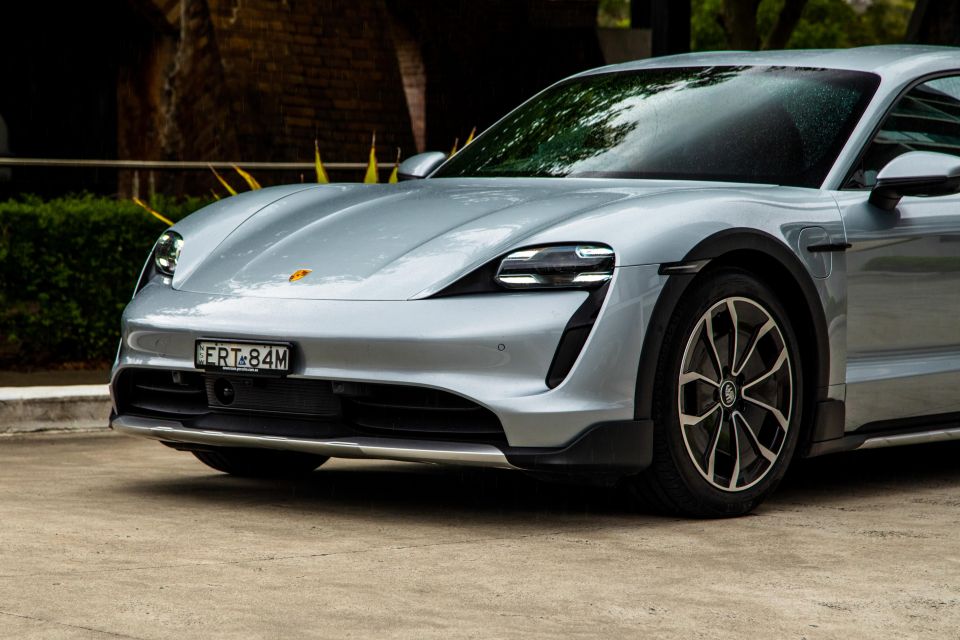


Quickly see how this car stacks up against its competition. Select any benchmark to see more details.
Where expert car reviews meet expert car buying – CarExpert gives you trusted advice, personalised service and real savings on your next new car.
I’m not saying the wagon-style Porsche Taycan 4 Cross Turismo has more aesthetic appeal than the sedan-bodied Taycan, but from the rear in Dolomite Silver Metallic, it’s pure addiction.
As far as full-blown, high-performance EVs go, it doesn’t come any better than the Porsche Taycan. Low-slung, almost two metres wide and the epitome of a futuristic Porsche for the here and now.
And, yet it had its debut back in 2019 – based on the Mission E concept, which we first saw at the 2015 Frankfurt Motor Show. That’s forward vision at its very best.
Somehow, even the punters know it’s a Porsche at a glance, and that alone spells a triumph in design; given the Taycan looks nothing like any other model in the entire range, yet the profile is exactly what you might envisage a fully-electric Porsche to look like.

The Taycan 4 Cross Turismo (it’s a mouthful) is easily the more versatile solution in the Taycan range, itself emanating from the Porsche Mission E Cross Turismo, first shown in 2018 at the Geneva Motor Show, with raised suspension and a longer wagon (estate) body, similar to the Panamera Sport Turismo but built on Porsche’s fully electric J1-platform.
Judging from the rear view, few will notice the 20-millimetre increase in ride height the Cross Turismo thanks to its slightly wider profile over the regular Taycan, and still low-riding profile all-round.
Initially, I didn’t warm to the Cross Turismo, but after living with it for a while I’ve come full circle and now prefer it over the Taycan, given its inherent five-door practicality and the extra load-hauling ability which comes with it – not to mention that wide rear end I’m so infatuated with.
A proper head turner even in this entry-level guise, complete with protection plates, sills and cladding, and still a lot less expensive than a base 911, if Porsche ownership and environmental sensitivity are your principle goals here.
The Taycan Cross Turismo range kicks off with the Taycan 4 Cross Turismo tested here, which is priced from $180,400 before on-road costs and options – there are always option boxes you’ll want to tick at this price point.
Sitting squarely in the middle of the model range is the Taycan 4S Cross Turismo, priced from $209,600 before on-roads, while the top-spec Taycan Turbo Cross Turismo, starts at $284,600 before on-roads. Unlike the regular Taycan range, there’s no ‘Turbo S’ variant in the Cross Turismo line-up.
There are 17 colours to pick from in total including just two (white and black) that are standard while the remaining 15 paints attract a premium of either $2300 for the metallic colours or $5000 for the so-called ‘Special Colours’. Paints-to-sample are pricier still at $18,490 a pop, or Individual colour development paint-to-sample is priced at $23,740.
Rivals to the Porsche Taycan 4 Cross Turismo are few and far between (if at all) in this rarefied EV segment, but we’d suggest you take a look at the BMW iX xDrive50 Sport, priced from $174,900 before on-roads or the ballistic iX M60 version (0-100km/h in 3.8 or better) at $222,900.
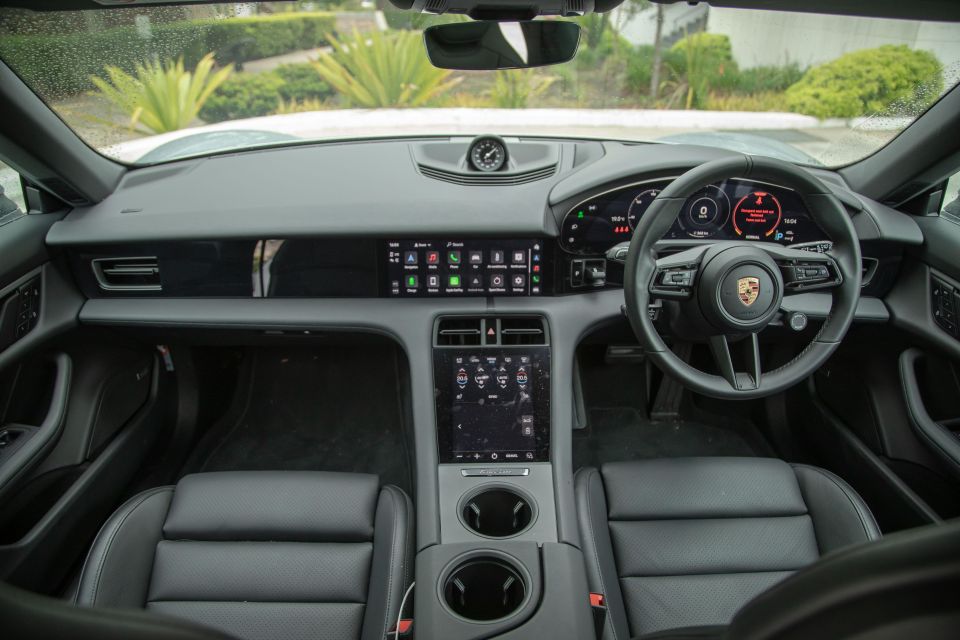
Buy your new car without the stress. It's fast, simple and completely free.

Great service from Travis and team, second time I have used this business would not hesitate to recommend them to anyone
Craig C.
Purchased a Ford Ranger in Sunshine Coast, QLD
CarExpert helped Craig save thousands on his Ford Ranger, now let us save you on your next new car.
Find a dealIt might ride 20mm higher (up to 30mm with the Off-Road Package), but lowering yourself into the superbly shaped Porsche front buckets feels no different to climbing into my 911 – okay, it’s a tad easier, given Taycan’s seats are slightly broader with more padding and all the better for it.
The cockpit, though, is pure Porsche at its most contemporary. Devoid of any-and-all buttons or knobs, except for a couple of roller switches on the trademark three-spoke sports steering wheel can be cause for immediate concern, but you soon get the hang of it.
There’s the one exception to that. The air vents aren’t physically adjustable and require you to navigate through a few steps on the lower touchscreen, so it’s not exactly intuitive. The HVAC screen also doubles as a battery condition display, especially good to view Taycan’s charge state and remaining range with graphics to match.
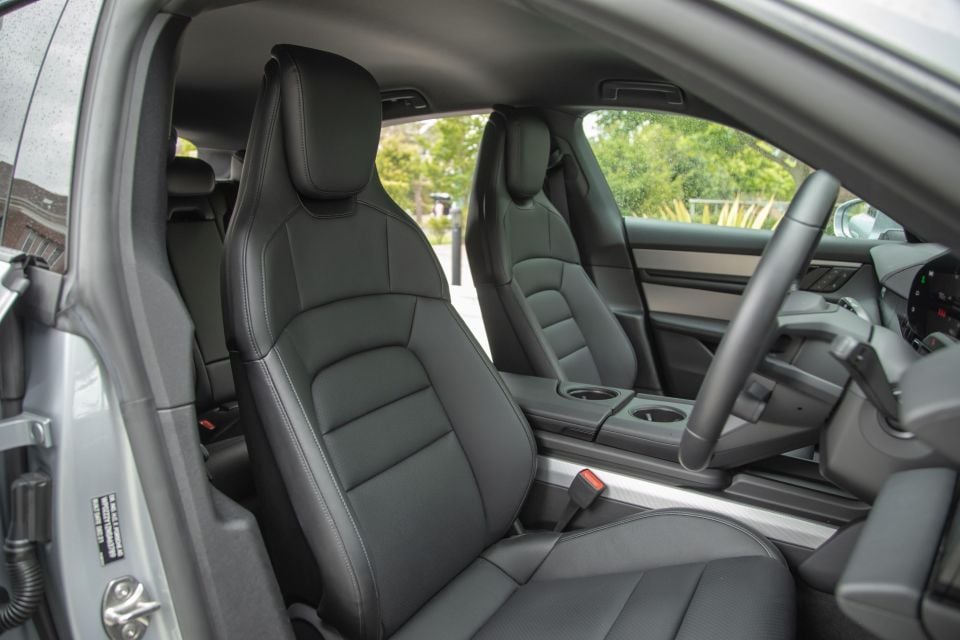
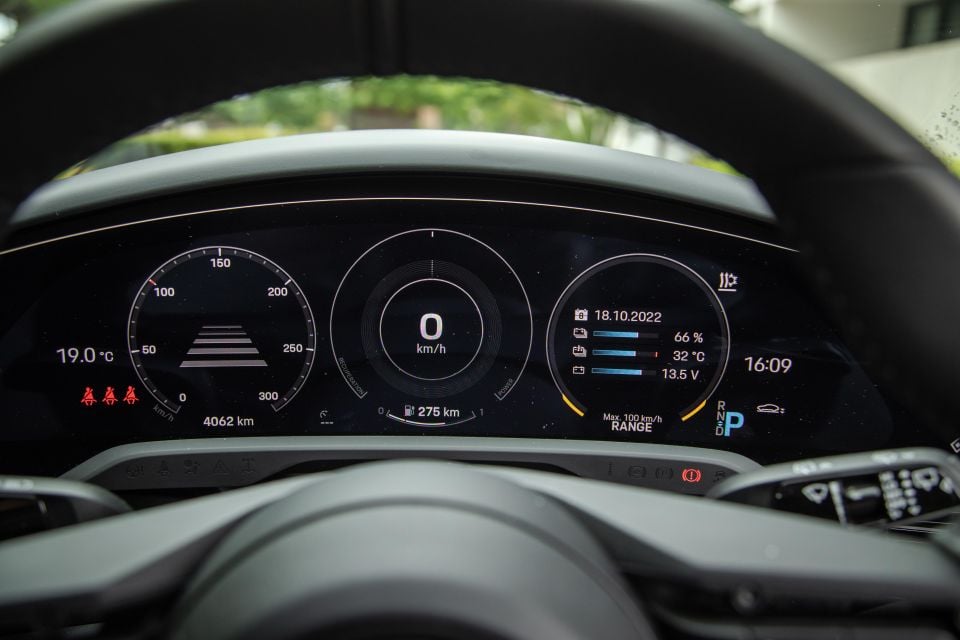
The super-size driver’s display is another brilliant bit of kit. Fully configurable but with a digital version of Porsche’s trademark tachometer smack-bang-in-the-middle and flanked by two more digital dials, both of which are fully customisable depending on the drive mode selected.
The start button is on the right and is touch activated with haptic feedback – just remember to hold it down for a second or two when powering down the Taycan.
On the other side of the steering wheel is an upright version of the 911’s Braun-style shift lever (down for drive, up for reverse), with a Park button in the same housing. All of it ergonomically flawless.

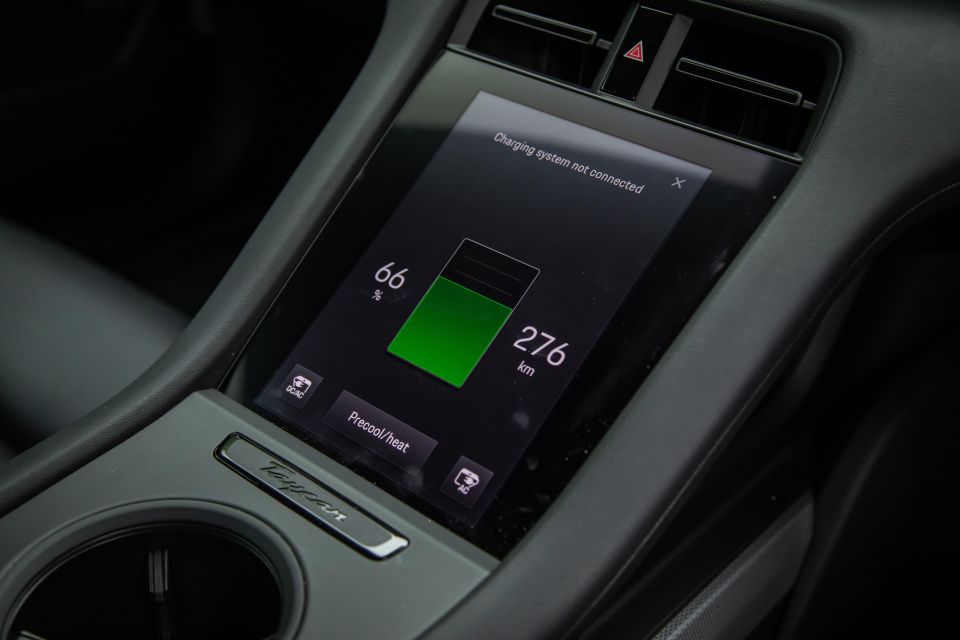
The infotainment display is properly integrated into the dash (is anyone else over the ubiquitous floating screens?), housing a wealth of information including Sport Chrono, Navigation and general infotainment functions. Its super-sharp with fast response even when using wireless Apple CarPlay.
It’s not exactly a luxury environment like BMW’s iX range of SUVs, but the materials are first-rate and the tech is cutting-edge, while the seats (front and rear) mirror any other Porsche pew.
More than anything though, it’s a fine, fit-for-purpose instrument for those that enjoy best-in-class dynamics in their EV as only Porsche can do – entry-level grade notwithstanding.

Our tester was configured as a 4+1 – meaning even the rear seats resemble the bolstered buckets up front, complete with centre armrest when it’s not in use as an occasional fifth seat.
There are also four points of back-row ventilation and a comfortable amount of rear legroom.
Better still, rear-seat passengers will enjoy an extra 30mm of headroom compared with the regular Taycan, thanks to the slightly higher roofline of the Cross Turismo.
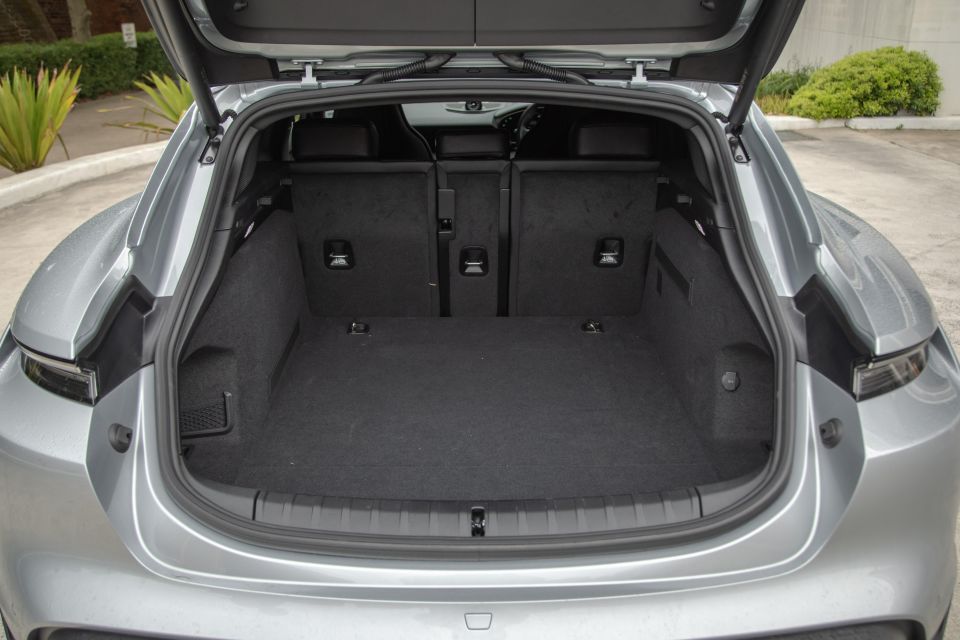
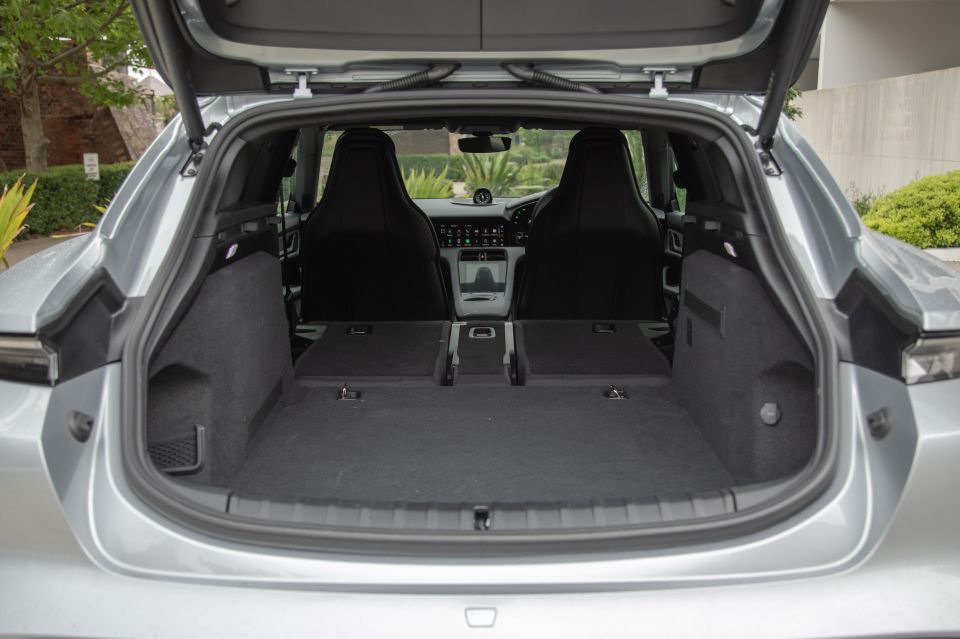
Storage is pretty good too, with dual cupholders (separated), decent centre-console bin and a bit of extra storage under the floating bridge, along with four USB-C ports split between front and rear seats.
Overall luggage space is as it should be in a wagon of this size with 446L behind the rear seats, expanding to 1212L with the rear seats folded (dead flat) for easy loading of stuff like boards, bikes and golf clubs.
There’s another 84L of useful luggage space in the ‘frunk’.

The Porsche Taycan Cross Turismo features a dual-motor (all-wheel drive), all-electric powertrain and a 93.4kWh Performance Battery Plus Pack.
In the base Taycan 4 it makes 350kW of power and 500Nm of torque, good for a claimed range of 437km and a 0-100km/h sprint in 5.1 seconds.
In the 4S, it generates 420kW of power and a maximum of 650Nm of torque with a 0-100km/h dash in 4.1 seconds.
The Turbo produces 500kW of power and 850Nm of torque. Claimed range is up to 452km on the WLTP test cycle for the 4S and Turbo. It can hit 100km/h from a standing start in an eye-popping 3.3 seconds.
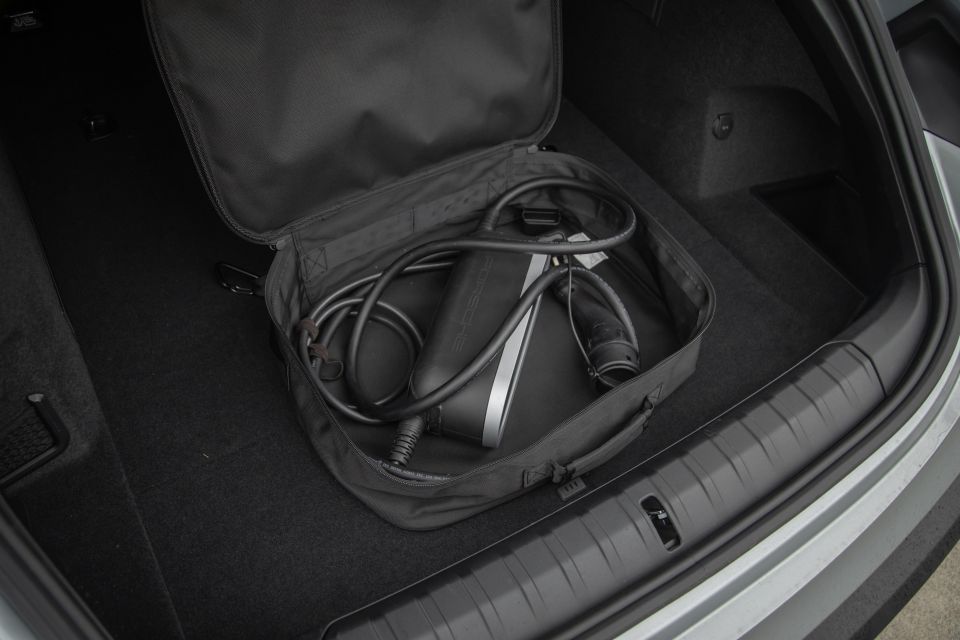
Interestingly, the Taycan uses a two-speed transmission (most EVs use a single-speed transmission).
On the charging front the Taycan platform supports 800V charging, along with a mix of single-and three-phase AC charging.
In its regular trim it can achieve up to 11kW of charging on AC, but an optional three-phase 22kW charger can be selected to improve charge capacity.
DC charging occurs at 800V and peaks at 262kW, with an average charge rate of 197kW over a typical charge cycle. It’s a pretty impressive figure when compared to other fast-charge capable EVs on the market.
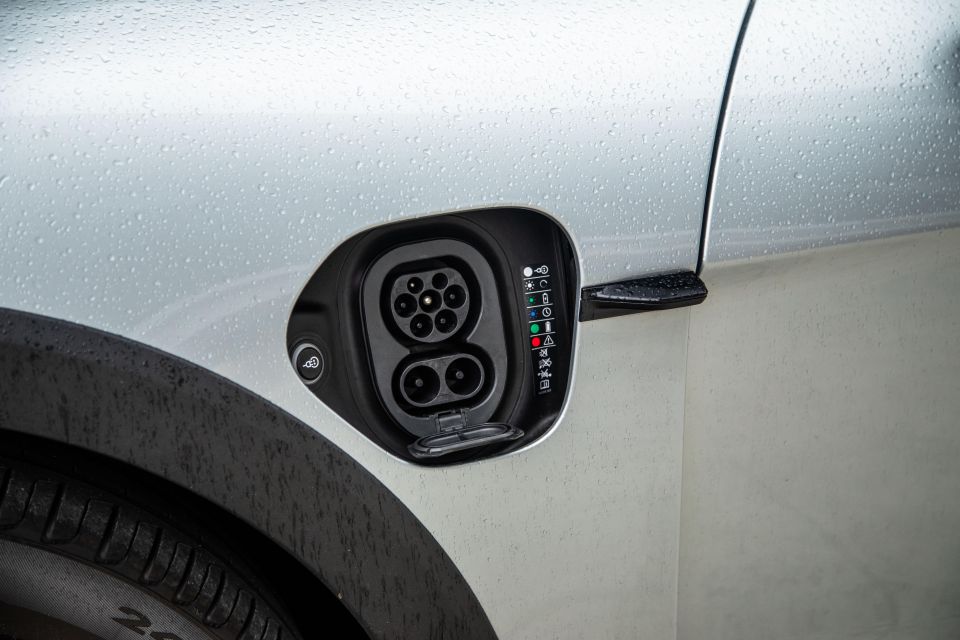
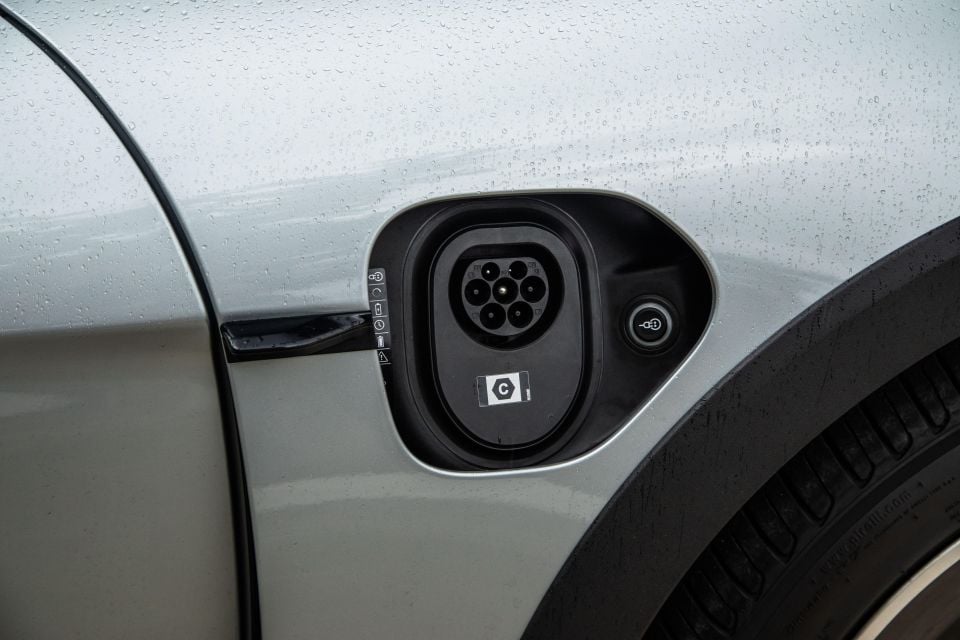
Porsche has also fitted the Taycan with charge ports on both sides of the vehicle on the front quarter panel. One side caters for AC and DC charging, while the other side will only do AC charging.
Like other vehicles with chargers located further down the sides, it can be a little tricky to reach the charge port on chargers with shorter DC cable runs.
How much juice does it use? The official claim is 28.7kWh/100km and on test we achieved a little over 25kWh/100km.
Over the week-long test period, we only had to top-up once on a 50kW fast charger, which took us from around 50 per cent battery capacity to 96 per cent in around 45 mins or so.
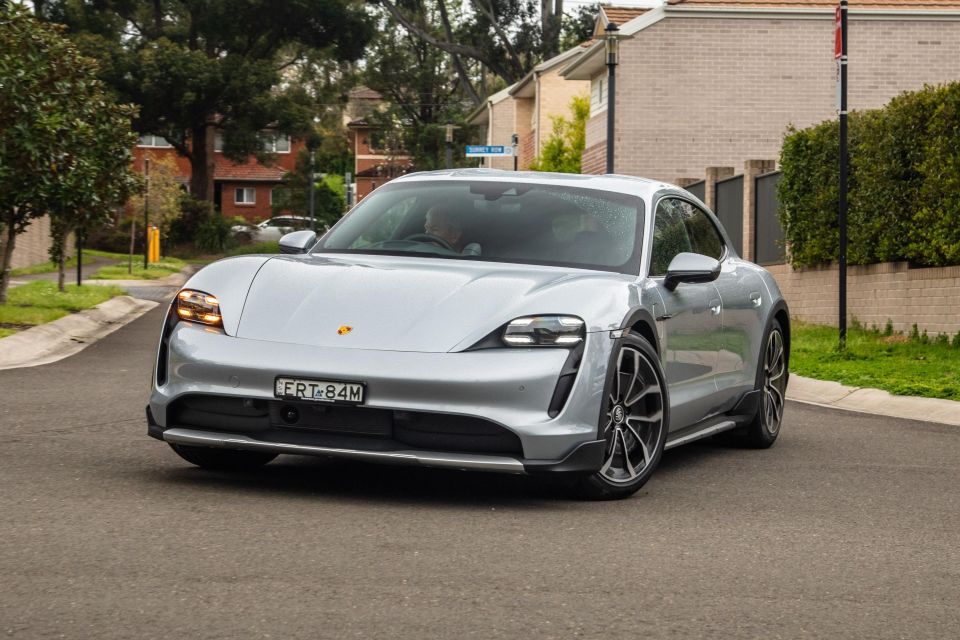
It’s quite a feat, but Porsche, unlike any other carmaker in this high-end EV segment, has pulled off some magic with its Taycan model range. From the moment you get behind the wheel to the end of your journey, it’s a 100 per cent all-Porsche experience.
It’s a holistic approach that starts with the driving position and feedback through the steering wheel and other controls like throttle and brake pedal feel that will leave you gobsmacked and never wanting to hand the car back. Anything else feels second rate.
Most times you simply get in and put your foot on the brake and the Taycan automatically awakens, simply requiring the driver to flick the shifter paddle one way or the other, and then you’re off and running. It’s that simple – and of course there’s no warming the car up when you’re in an EV – you just go.
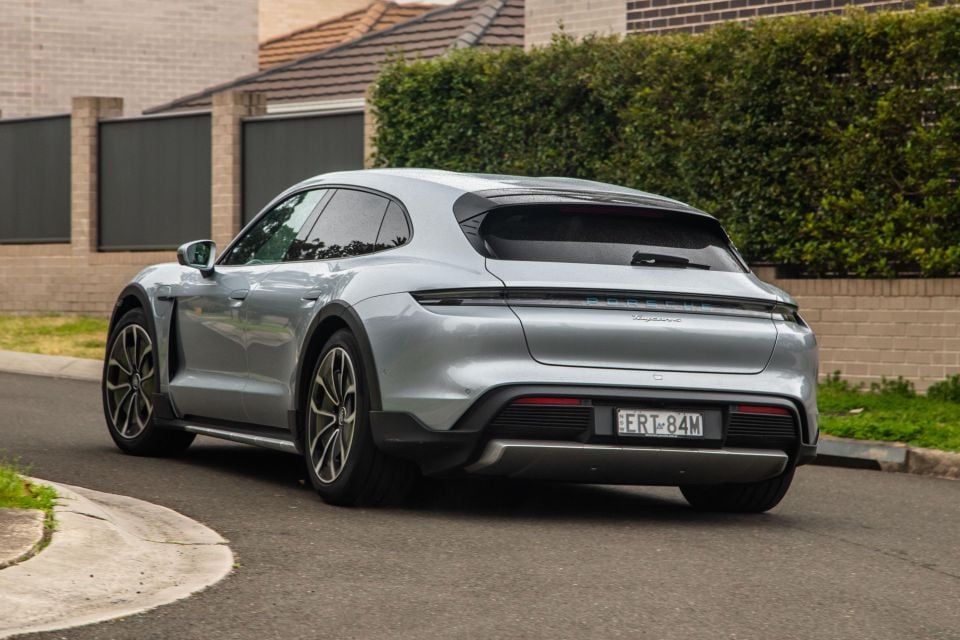
The default drive mode is Normal and that’s just fine for daily commute, but more often than not I found myself rotating the drive mode controller on the steering wheel around to Sport or Sport+ (with Sport Chrono) for the sheer thrill of pulling away from the traffic lights before your combustion engine comrades have even moved a centimetre.
Tipping the scales at 2245kg (sans driver), the Taycan Cross Turismo isn’t exactly a lightweight, but somehow it defies its sheer heft and five-metre-long length. Behind the wheel is simply doesn’t feel like you’re piloting a big, heavy wagon, not in the slightest. In fact, you’ll want to drive it like a 911 – and it’ll surely oblige.
In base Taycan 4 trim you might think it’s just not quick enough, but I’d argue a 5.1-second sprint is plenty fast enough, especially if you’ve dialled up Sport Plus. That alone will leave most others in the dust thanks to most of its 500Nm peak coming on-song from the get-go.
Drivers also have the option of choosing a regen braking setting in two quick steps using the infotainment screen, which I used more often than not, given the energy recuperation and almost-one-pedal driving. The only problem being it won’t hold the setting – so you’ll need to select it every time you go anywhere.
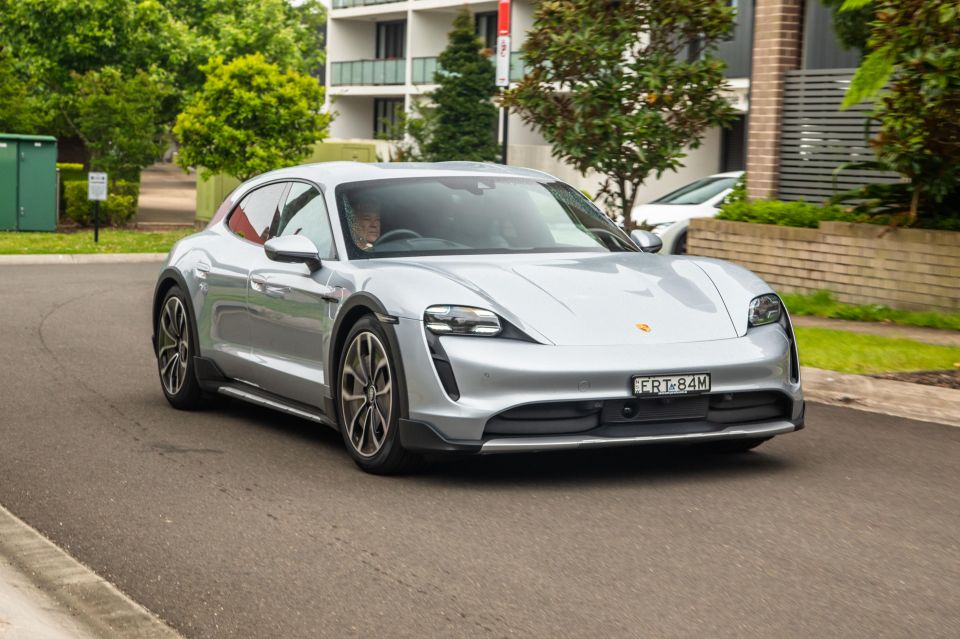
Same goes for the Jetson’s-style ‘Porsche Electric Sport Sound’ feature. It’s a welcome addition when pushing along in Sport, but a tad annoying when running around in the burbs, unless of course you’ve got the kids with you, in which case they’ll love it.
While Porsche has a reputation for engineering an outstanding ride/handling balance across their entire ICE model range but especially its SUVs, it’s also managed to achieve a similar set-up with its EVs.
Taycan’s three-chamber adaptive air-suspension system is one reason for Cross Turismo’s excellent ride and handling, but it also gets the same suspension layout as its Taycan sports sedan sibling; double wishbones up front, with a multi-link axle and double wishbones down back.
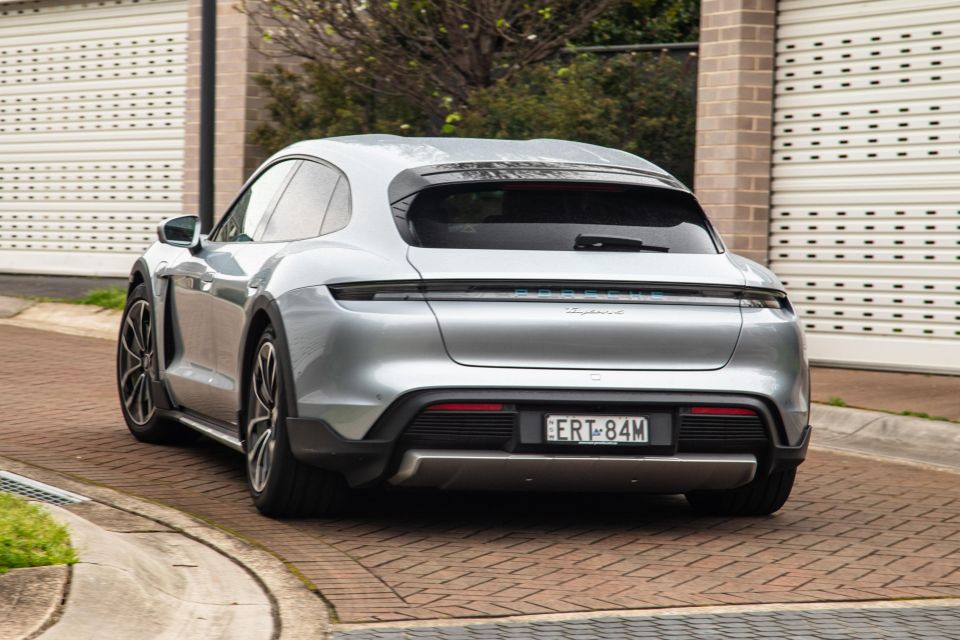
Where expert car reviews meet expert car buying – CarExpert gives you trusted advice, personalised service and real savings on your next new car.
Switching from one drive mode to another evokes an instant response from the damping department – though even in Normal, the Cross Turismo can still hustle along.
Turn in is sharp and accurate, while the steering feels more connected and delivers greater feedback than any other battery electric vehicle we’ve driven to date.
Braking tends to feel a little remote in EVs, and it’s similar in the Porsche, although, pedal progression is nicely calibrated with stopping power, so its feels more natural than its rivals.


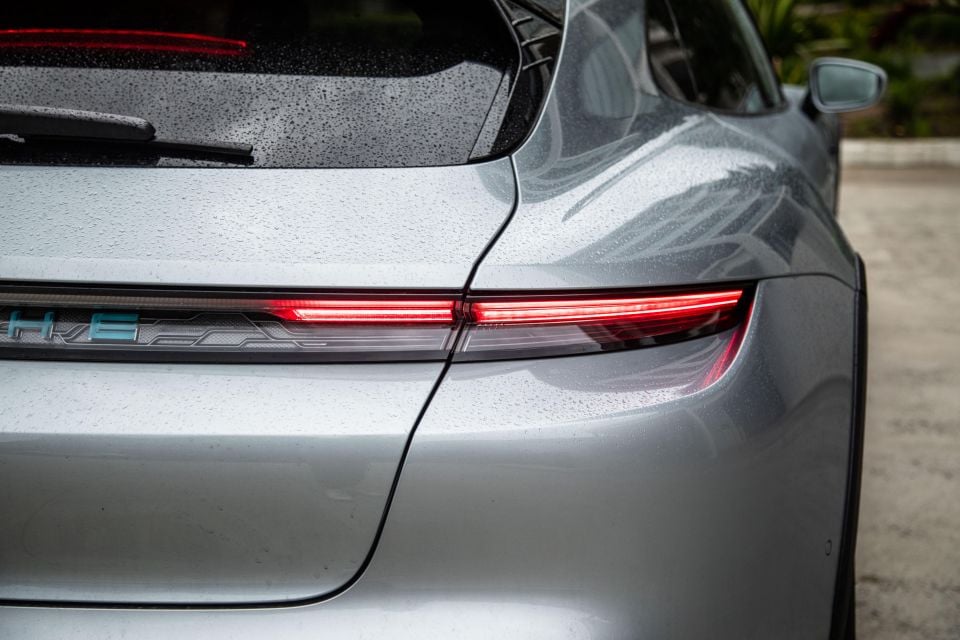
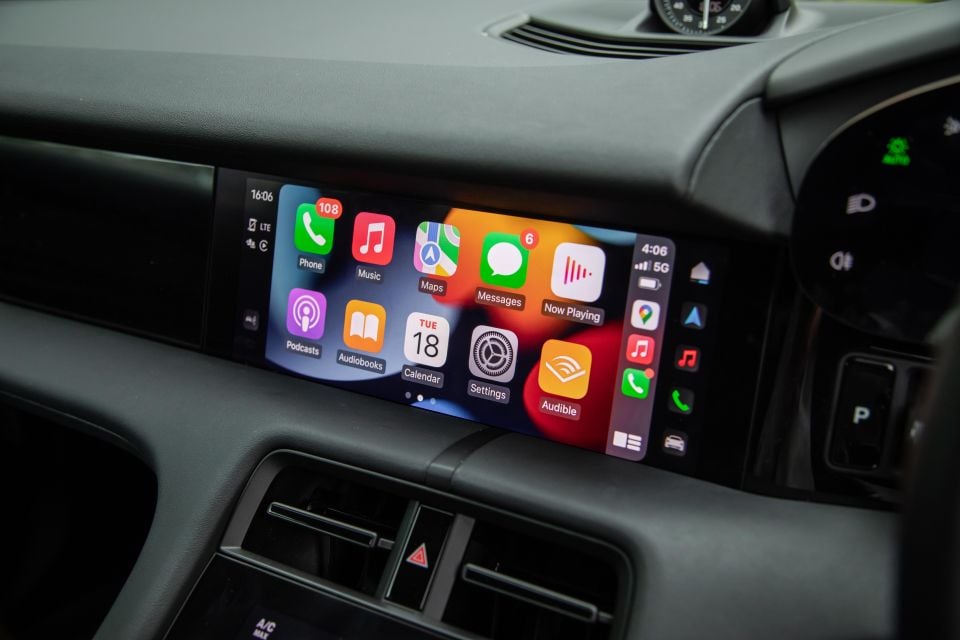
Taycan 4 Cross Turismo highlights:
Taycan 4S Cross Turismo adds:
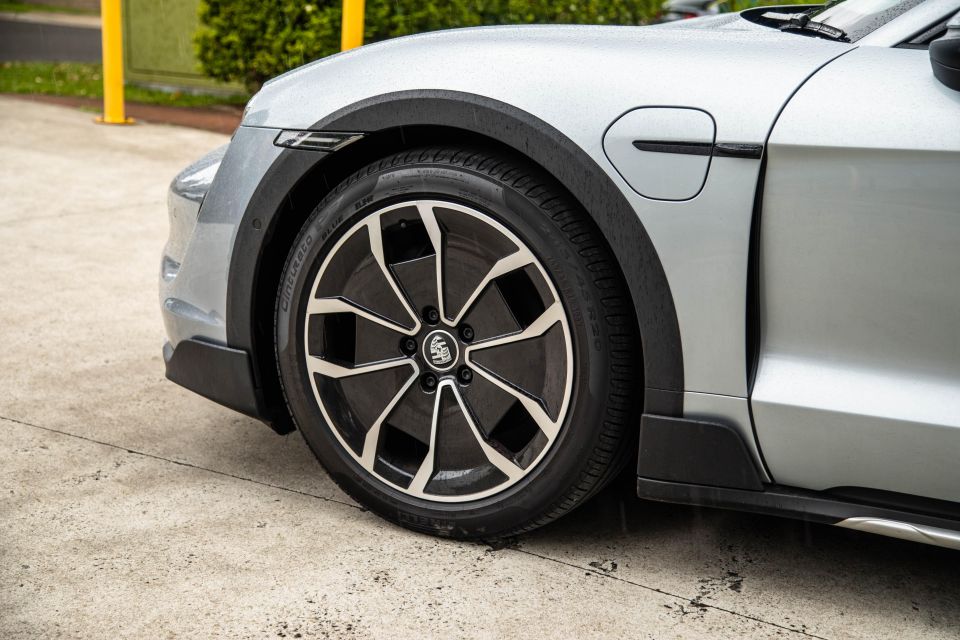
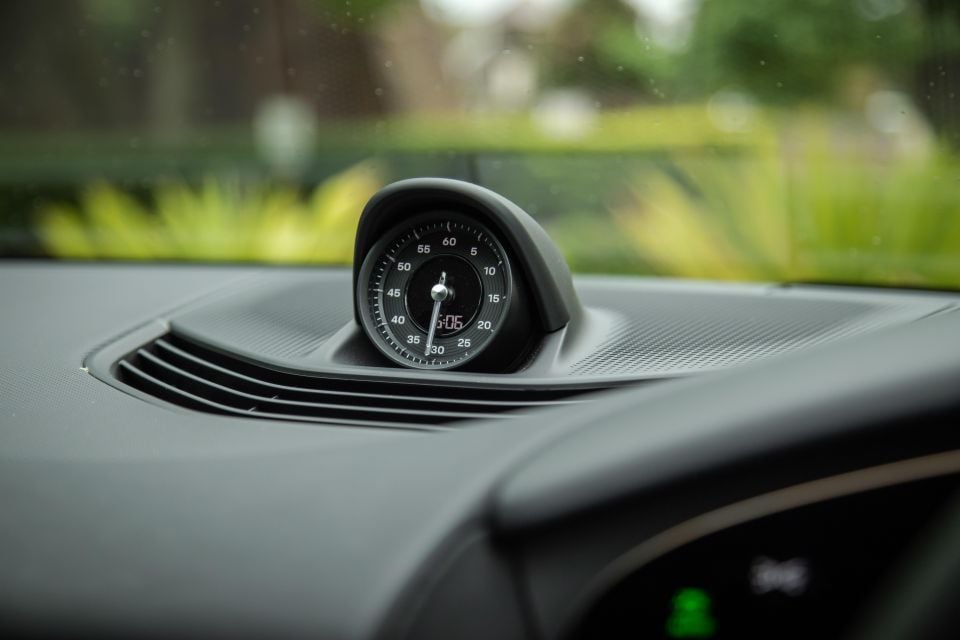
Taycan Turbo Cross Turismo adds:
Our Taycan 4 Cross Turismo was fitted with the following options:
These added list of options also bumped-up the price of our tester to a cool $215,640 plus on-roads, so it would be wise to do a like-for-like comparison with the Taycan 4S Cross Turismo before you start ticking those option boxes.
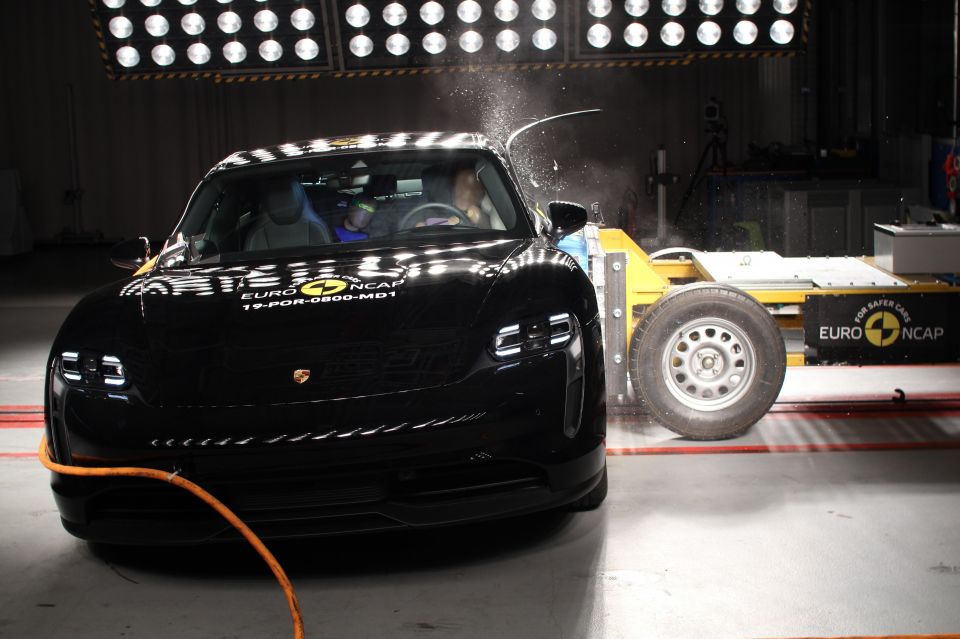
While the Porsche Taycan doesn’t have a safety rating from local ANCAP just yet, it achieved five stars in crash testing conducted by Euro NCAP in 2019. The rating applies to all Taycan variants.
The Taycan returned 85 per cent for adult occupant protection, 83 per cent for child occupant protection, 70 per cent for vulnerable road user protection, and 73 per cent for safety assist.
Autonomous emergency braking (AEB), lane-keep assist, and blind-spot monitoring are standard fitment, along with adaptive cruise control and nine airbags.

The Porsche Taycan Cross Turismo is backed by a three-year, unlimited-kilometre warranty. There’s also an eight-year/160,000km warranty on the battery.
It still lags behind most of the premium market, which has moved to offer greater than three years of warranty coverage (except BMW who is also sticking with three years).
Maintenance is required every 12 months or 15,000km – whichever comes first.
Buyers can prepay for three, four or five years of servicing, which comes in at $2995, $4495 and $5495 respectively. It’s pricey no matter which way you look at it.

Before writing this review, I would have said the Taycan sedan was the looker in the model range. Now, I’m not so sure.
The Cross Turismo is more unique, more special and by virtue of its estate body, a far more versatile Porsche EV that gives precious little away to the regular Taycan in the ride and handling department.
Actually, it handles the bumps slightly better and never once feels like you’re steering a large wagon, even when you’re having fun in the twisties.
Then, there’s the fact it’s an EV, but not just any EV. It’s a Porsche first and foremost, and perhaps the most accomplished EV money can buy right now – even in this entry-level guise.
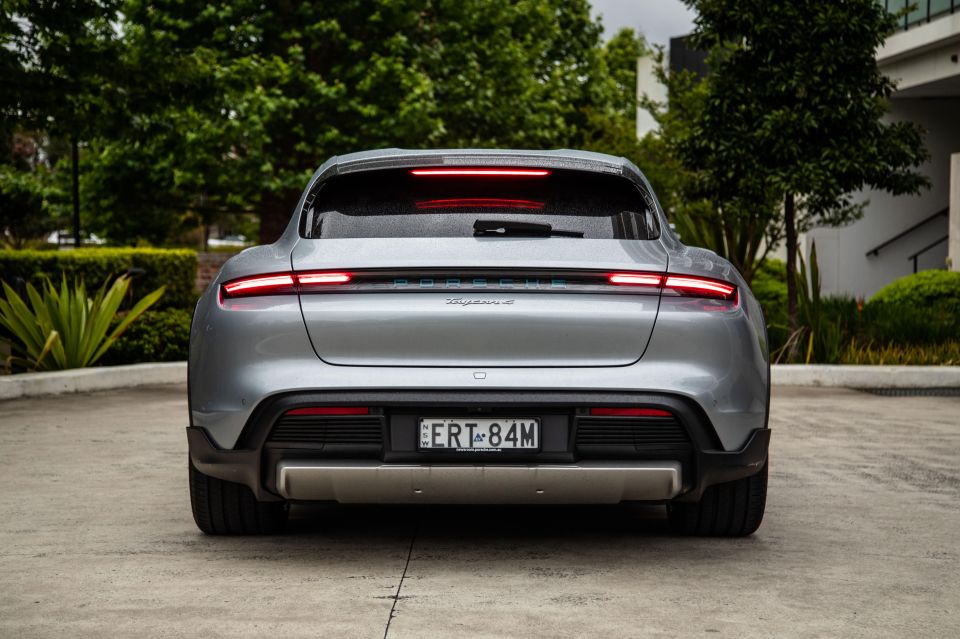
Click the images for the full gallery
Where expert car reviews meet expert car buying – CarExpert gives you trusted advice, personalised service and real savings on your next new car.
Anthony Crawford is a CarExpert co-founder and senior presenter with 20+years in automotive journalism and content creation.


William Stopford
15 Hours Ago


William Stopford
2 Days Ago


CarExpert.com.au
5 Days Ago


Damion Smy
6 Days Ago


Damion Smy
10 Days Ago


Max Davies
11 Days Ago